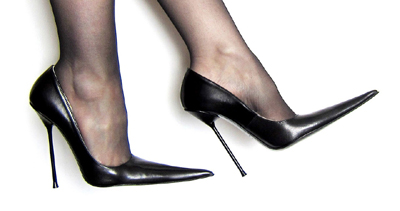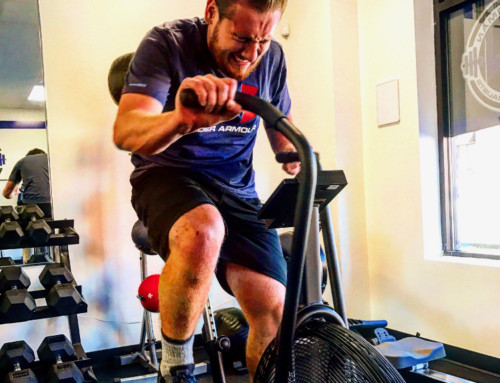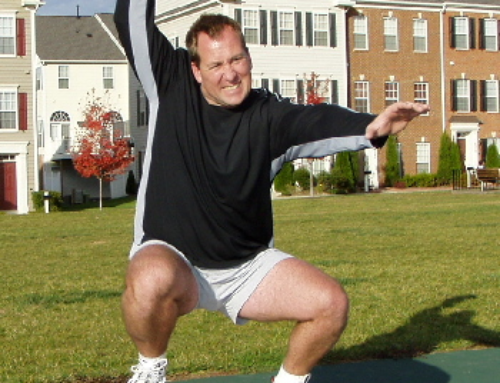I am about to offend all of our female readers with this one, but I’m just putting the evidence out there. Do with it what you will. Every strength coach out there knows it’s a losing battle getting their female clients to stop wearing high heels for good, but here are a few reasons to at least cut back on the amount of time you may spend in heels every week.
Heels, by their nature, are used to accentuate the female physique by elevating the heels and making the legs appear longer and more defined. Women appear taller and their curves are accentuated by a forward tilt through the pelvis. This anterior tilt increases the curve in the lower back and this elevates the chest into more extension. Put all of these anatomical shifts together and it equals taller posture, more defined curves, and increased self esteem. So whats the problem? If heels present all of these benefits what’s the downfall? Let’s break it down joint by joint.

The Foot and Ankle
The foot and the ankle are complex structures made up of 26 bones with individual joints and ligaments between them and a complex array of tendons and muscles that provide support. Ideally, the foot is designed to be a stable structure to provide a solid base for the rest of your kinetic chain. It is meant to function on flat surfaces and should have the ability to support itself when you are not wearing shoes.
Heels, unfortunately, make the foot function in ways it was not designed to. The supporting musculature begins to get “lazy” and our anatomy starts to work in different compensatory patterns. When you shove your feet into extremely narrow toes and jack the heel up even a couple inches it wreaks havoc on the ankle and foot by shortening the lower leg muscles (calf, soleus, and posterior tibialis) and shuts down the function of the anterior tibialis, a muscle critical for dorsiflexion of the foot and proper gait patterns. What we begin to see are ankles that are overly stiff and gait patterns that are measureably different from the norm even after you take them off. We start to see feet that swing out and around while walking or running because the foot has lost its ability to dorsiflex. The result is constant dysfunctional patterning that can lead to chronic pain all the way up the kinetic chain. If the ankles and feet have lost their ability to move through proper ranges of motion, the body will compensate by finding mobility through the knees, which by anatomical design should be a stable hinge joint that is meant to move in one plane. Shearing and twisting forces will be applied to the knees if the ankles have lost their mobile function.
Changes in foot function is just the start. Chronic problems of wearing heels include some debilitating problems such as hammer toes and bunions, that if left unattended can cause some painful problems. Many times it can lead to surgical procedures and a long recovery to correct these ailments. What happens is that over time, jamming your toes into the pointed front of these shoes along with the constant pressure being thrust forward onto the ball of the foot actually begins to change the anatomical structures of the foot. These bony changes can progress to the point where the only way to fix them is going under the knife with surgical procedures.
Many women who are regular heel wearers begin to develop some degree of bunion development over time. Since these are bony changes, and not soft tissue deformities, the only way to properly correct them is through surgery. With all of these anatomical positions being out of whack and the lower leg functioning at less than optimal, women also begin suffering from plantar fasciitis, which is a debilitating soft tissue problem that makes it feel like you are walking on glass. Over time the constant plantar flexion of the ankle joint causes adhesions in the musculature and fascia in the bottom of the foot and in the lower leg which leads to a shortening, and decrease in function of these important ankle and foot stabilizers.

The Hips and Lumbar Spine
Wearing heels often times leads to chronic lower back pain and a lot of other issues in the lumbo-pelvic hip complex. The higher the heels the more elevation you get in the back of the foot, obviously. As we trace this up the kinetic chain to the hips we see a very distinct change in people’s anatomy. The front of the pelvis begins to shift forward and down and there is an increase in lumbar spine curve and very obvious anterior pelvic tilt. The result is an exaggerated form of lower cross syndrome. Folks who are already “stuck” in an anterior tilt of the pelvis without heels on can expect their problem to worsen if they continue to wear heels. The higher the heels, the more anterior tilt you can expect to see.
This chronic shortening of the hip flexors and lower back can actually decrease glute and abdominal function over time and leave people in tremendous pain because the lower back has nothing to stabilize it. As we trace this dysfunctional pattern down to the knees we see a lot of anterior knee pain as a result of the quads having to take up the slack for under active glutes. Women actually start to hang off of their quads and lower backs because its near impossible to use proper body mechanics with your heels so far off of the ground and your center of gravity pushed so far forward. Once these dysfunctional patterns start, and are constantly reinforced, the vicious cycle continues and dysfunctions worsen if these pelvic imbalances are not addressed.

As seen above, wearing heels can reinforce lower crossed posture by weakening the abdominals and glutes and tightening the lower back and hip flexors.

Even an inch of heel elevation has effects all the way up the kinetic chain. The far left represents normal posture where all of the joints are stacked on one another. The far right represents how the body is aligned while wearing heels. The knees and pelvis shift forward and the front of the pelvis drops towards the floor.
If you sit at a desk for a living or travel for long periods of time this will only reinforce the lower crossed patterning of the hips and can have huge implications on spine and hip health.
Am I saying that you should absolutely, positively, without a doubt as if your life depended on it never let your feet come in contact with another pair of heels for the rest of your life? No. I also know that I am fighting a losing battle trying to get my female clients to do so. If you insist on wearing heels from time to time it’s not the end of the world. Just be sure to do these few exercises to make sure you are keeping your feet, ankles, and lower back happy in the long run.
Corrective Strategies
Lacrosse Ball SMR– Plantar Fascia and Lower Legs: This is a great tool to keep the soft tissues of the lower legs and calves mobile and functional. Make sure you rest on tender trigger points for at least 30 seconds to get the most benefit out of this exercise on both the calves and the plantar fascia.


Calf and Soleus Stretch: Hold each stretch for at least 30 seconds. You should feel a deep stretch along the back of the lower leg in each position.


Hip Flexor/Quad Stretch: Hold this stretch for at least 30 seconds. Be sure to keep your abs engaged and try not to hyperextend the lower back while hanging out in this stretch. Squeeze the glutes to keep the hips in a neutral position.


Bridges: Perform at least 2 sets of 15-20 reps. This will activate the glutes and reinforce proper body mechanics.


Dead Bugs: Perform 2 sets of 10 reps per side. It helps to keep a rolled up towel under your lower back to keep your spine neutral. Think about pressing your lower back down into the towel as you think about 360 degrees of abdominal activation. Be sure to keep your abs tight and your lower back down as you extend the opposite hand and foot.

To wrap things up, try to spend a little less time in those high heel shoes. Your body will thank you for it. But if you find yourself needing to elevate those heels for a night out on the town or for that important meeting where you have to impress, try these easy strategies to keep you out of pain and your body performing at its optimum level.
Josh Soper BS, CSCS







